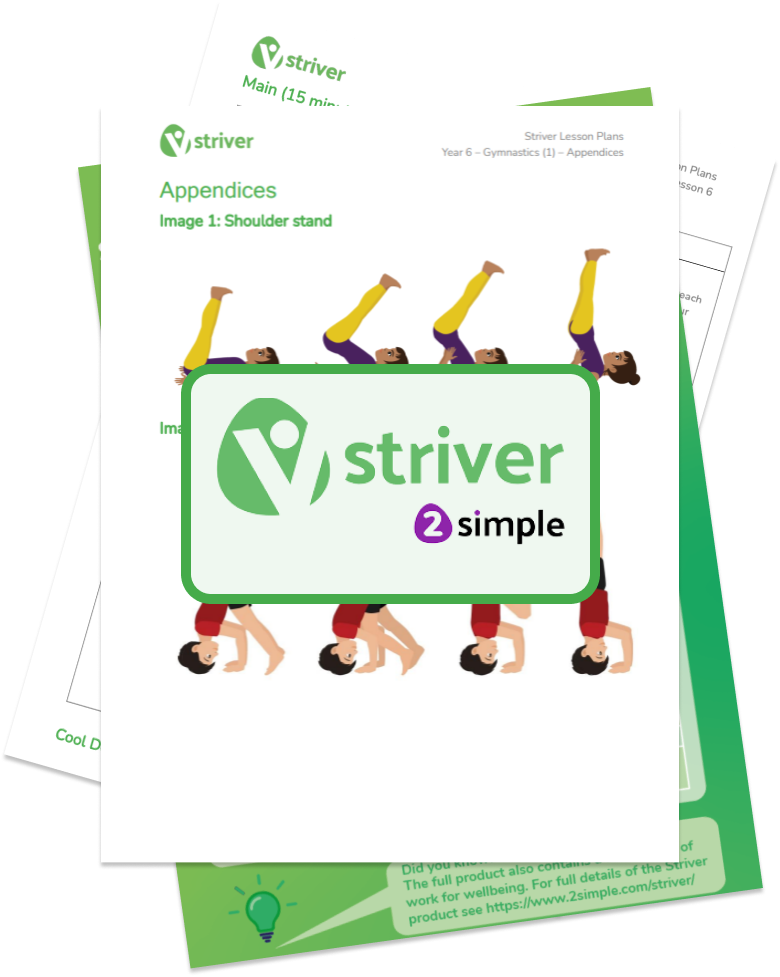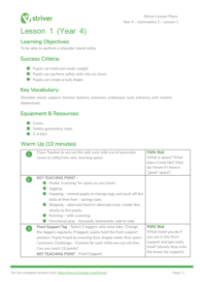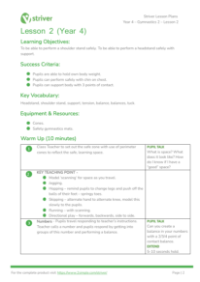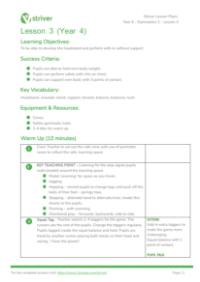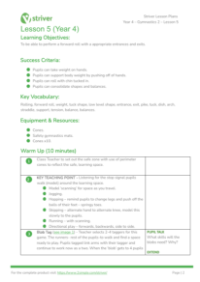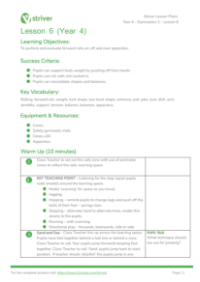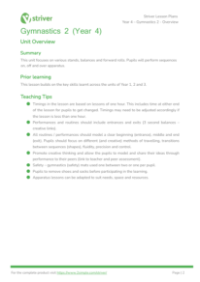Gymnastics 2 - Lesson 4
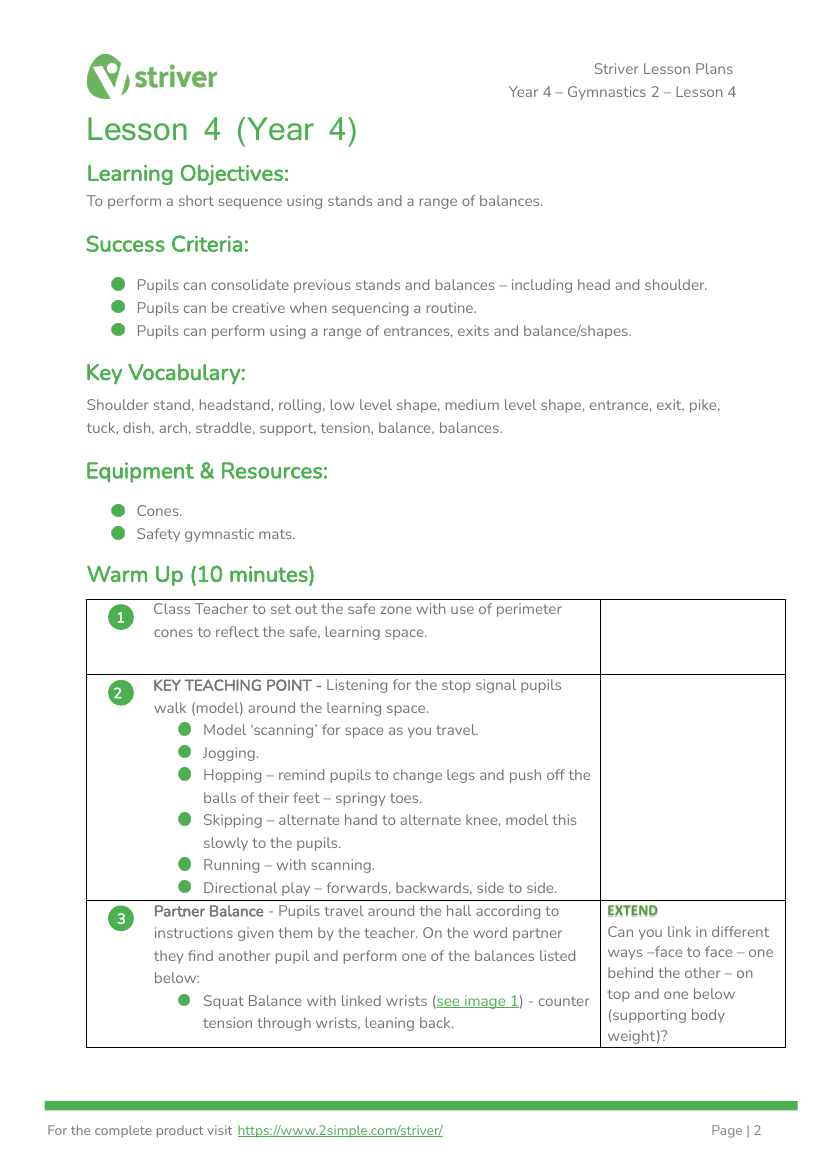
Physical Education Resource Description
In the fourth lesson of Gymnastics 2 for Year 4 students, the learning objectives are centered around performing a short sequence that incorporates stands and a variety of balances. To achieve success, pupils must be able to consolidate stands and balances previously learned, such as head and shoulder stands, and creatively sequence a routine that utilises a range of entrances, exits, and balance shapes. The key vocabulary for the lesson includes terms like shoulder stand, headstand, rolling, low level shape, medium level shape, entrance, exit, pike, tuck, dish, arch, straddle, support, tension, and balance. Essential equipment for the lesson includes cones to mark the safe zone and safety gymnastic mats to ensure a secure environment for the activities.
The lesson begins with a warm-up that spans 10 minutes, where the class teacher sets out a safe zone with perimeter cones and leads the pupils through various movements such as walking, jogging, hopping, skipping, and running, while emphasising the importance of scanning for space and listening for stop signals. This is followed by partner balance activities where pupils travel around the hall and perform balances such as the Squat Balance with linked wrists and the One Legged Tuck Balance, exploring different points of contact and levels. The main 30-minute session involves pupils working in pairs to create and perform their sequences on mats, including partner entrances and exits, stands, rolls, and balances, with the teacher providing targeted support for those who find the learning challenging. The lesson concludes with a cool-down activity called Octopus Tag, and a reflection period where pupils lie on their backs, close their eyes, and consider their performance as well as their partner's, using the key vocabulary to describe what they did well and identify areas for improvement.

